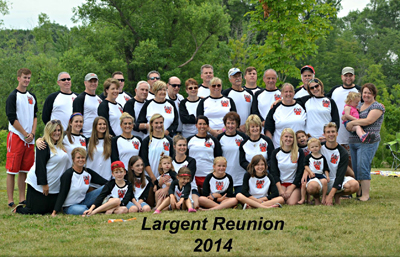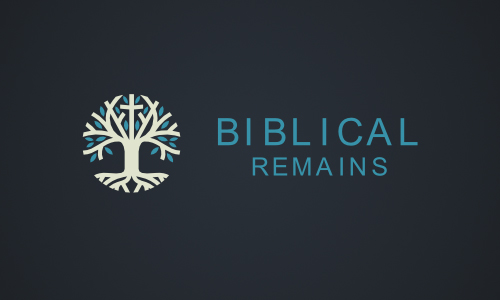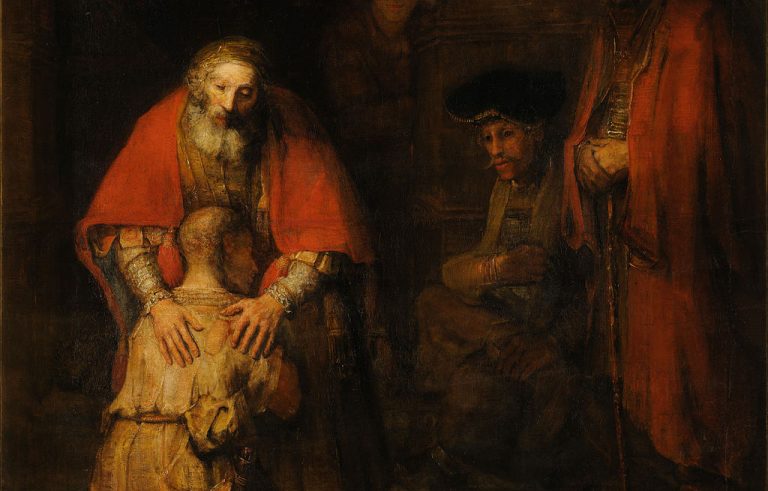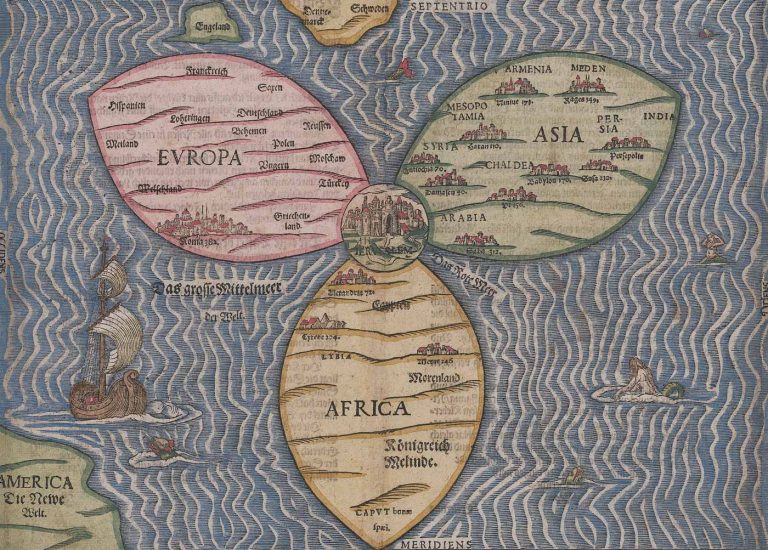Recapture the “ideal biblical family”
We had the “2014 Largent Family Reunion” two weeks ago in Minnesota. The running joke for the entire reunion was that my wife and I, as the sole surviving son, had to “get busy” producing a son to carry on the Largent family name. Things haven’t changed much in three and half thousand years.
Indeed, the two most important commodities of the ancient biblical world were land and family. What has changed is how we conceive of the ideal family. I would contend that the ideal biblical family looked less like my immediate family (my wife and children) and more like the family from our reunion photo.

The ideal biblical family
There are two important elements to family life in the biblical period that have significant implications, not only for how we understand families today, but also for how we understand our relationship with God.
1. For much of the biblical period the ideal family was composed of the extended or joint-family household.
This meant that multiple generations of family lived in the same house or compound. Referred to most often as the bet av, “house of the father,” the ideal Israelite household was made up of four generations (Lev 18:6-18): a Father and his wife, his father and his wife, his sons and their wives, his grandchildren, and any other dependents such as servants and bondsmen.
Families organized themselves in this way in order to ensure economic and physical viability. In the words of Mathews and Benjamin, “A household was made up of as many sets of childbearing adults and their dependents as was necessary for the entire group to feed and protect itself” (Social World of Ancient Israel).
In so doing, they could achieve the ideal Israelite life: living and dying under one’s own vine and fig tree. That image is repeated again and again as a vision of prosperity and abundance in times of peace (See, 1 Kings 4:25, 2 Kings 18:31, Isaiah 36:16, Micah 4:4, Zech. 3:10). You live under your own vine and fig tree because you are free of outside threats, able to sustain yourself and your family, but you are keenly aware that your produce is dependent upon God
2. Kinship terminology was legal, political and filial.
Biblical Hebrew is, as Lois Tverberg has described, “word-poor” (Walking in the Dust of Rabbi Jesus). Many concepts are grouped together, sometimes in ways we would not, under the same reference word. Where English tends to be precise, looking for slight differences of meaning between individual words, words in biblical Hebrew are less precise, building constructs off of multiple denoted concepts.
Kinship terms, such as “father,” “son,” “daughter,” “brother,” “uncle,” etc., are good examples. These terms carried multiple layers of meaning. “Father” could simply refer to a blood relationship, but it could also refer to the greater party in a contractual relationship, or the lord of a given political entity. “Brothers” could be blood relatives or they could be business partners or persons holding the same political rank.
In fact most of near eastern society was organized according to terms of kinship. The “Father” was the head of the smallest social unit, the family, just as the “Father” was the head of the largest social unit, the state. In this way, kinship terminology denoted social and legal responsibilities rather than simple blood ties. The state itself was referred to as a house: “House of David,” “House of Omri,” etc. (By the way, this is one reason we need not emphasize “God the Father” as a reference to God’s “maleness”, rather than a reference, in covenant language, to his Lordship and sovereignty)
More often than not, these layers of meaning converged. Physical relationships were confirmed through covenants that required the father to act as the “father,” the son to act as the “son,” and brothers to act as “brothers.” In other words, kinship was a relationship entered into and chosen rather than inherited because of blood ties.
Making the ideal biblical family our family today
This has a number of important implications for how we can and should conceive of family today.
Families are made up of covenant connections, not just blood connections. In the ancient world sonship didn’t begin with birth but when the father chose to adopt the newly born child as his own. That’s why I was so excited for my family reunion this month. It was an opportunity for all of us to declare that we are a family. It was an opportunity for us to adopt one another, to recommit ourselves to fulfilling the legal and social responsibilities of our assumed blood ties. We were a family, and are a family, because we chose to be a family then and there.
In a society, of blended families, and adopted families, families of friends, church families and, broken families, perhaps we need to affirm the covenant family more than the “leave it to beaver family.” Perhaps we will produce more “biblical” families if we affirm the family that has chosen to be a family more than the family that painfully lives together out of some notion of physical relationship.
More importantly, thinking about families in this way, frees us to find ourselves in the midst of the great arc of God’s redemptive history. Because of the work of Christ in the new covenant, we have been “grafted in,” adopted as sons and daughters of the old covenant. Indeed, properly understanding the biblical image of the family, as an extended, joint-family, held together through covenant shows us that the concept of “sonship” and election has not been done away with. It has been expanded to include an exploding joint-family all striving to live in the same bet av under the same vine and fig tree.
Your wife will be like a fruitful vine within your household; your children will be like olive shoots around your table.
Psalm 128:3




